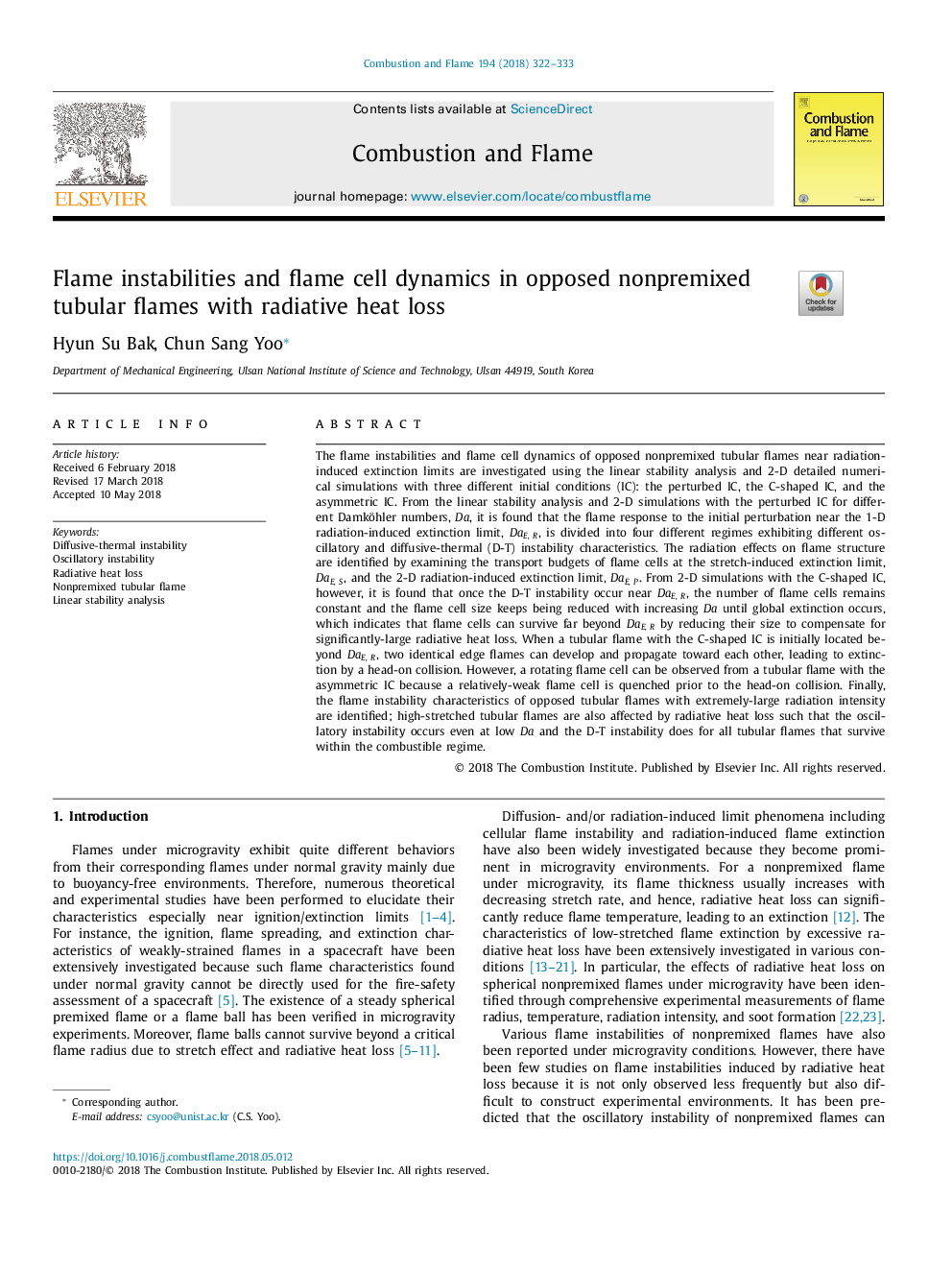| Article ID | Journal | Published Year | Pages | File Type |
|---|---|---|---|---|
| 6593491 | Combustion and Flame | 2018 | 12 Pages |
Abstract
The flame instabilities and flame cell dynamics of opposed nonpremixed tubular flames near radiation-induced extinction limits are investigated using the linear stability analysis and 2-D detailed numerical simulations with three different initial conditions (IC): the perturbed IC, the C-shaped IC, and the asymmetric IC. From the linear stability analysis and 2-D simulations with the perturbed IC for different Damköhler numbers, Da, it is found that the flame response to the initial perturbation near the 1-D radiation-induced extinction limit, DaE, R, is divided into four different regimes exhibiting different oscillatory and diffusive-thermal (D-T) instability characteristics. The radiation effects on flame structure are identified by examining the transport budgets of flame cells at the stretch-induced extinction limit, DaE, S, and the 2-D radiation-induced extinction limit, DaE, P. From 2-D simulations with the C-shaped IC, however, it is found that once the D-T instability occur near DaE, R, the number of flame cells remains constant and the flame cell size keeps being reduced with increasing Da until global extinction occurs, which indicates that flame cells can survive far beyond DaE, R by reducing their size to compensate for significantly-large radiative heat loss. When a tubular flame with the C-shaped IC is initially located beyond DaE, R, two identical edge flames can develop and propagate toward each other, leading to extinction by a head-on collision. However, a rotating flame cell can be observed from a tubular flame with the asymmetric IC because a relatively-weak flame cell is quenched prior to the head-on collision. Finally, the flame instability characteristics of opposed tubular flames with extremely-large radiation intensity are identified; high-stretched tubular flames are also affected by radiative heat loss such that the oscillatory instability occurs even at low Da and the D-T instability does for all tubular flames that survive within the combustible regime.
Keywords
Related Topics
Physical Sciences and Engineering
Chemical Engineering
Chemical Engineering (General)
Authors
Hyun Su Bak, Chun Sang Yoo,
